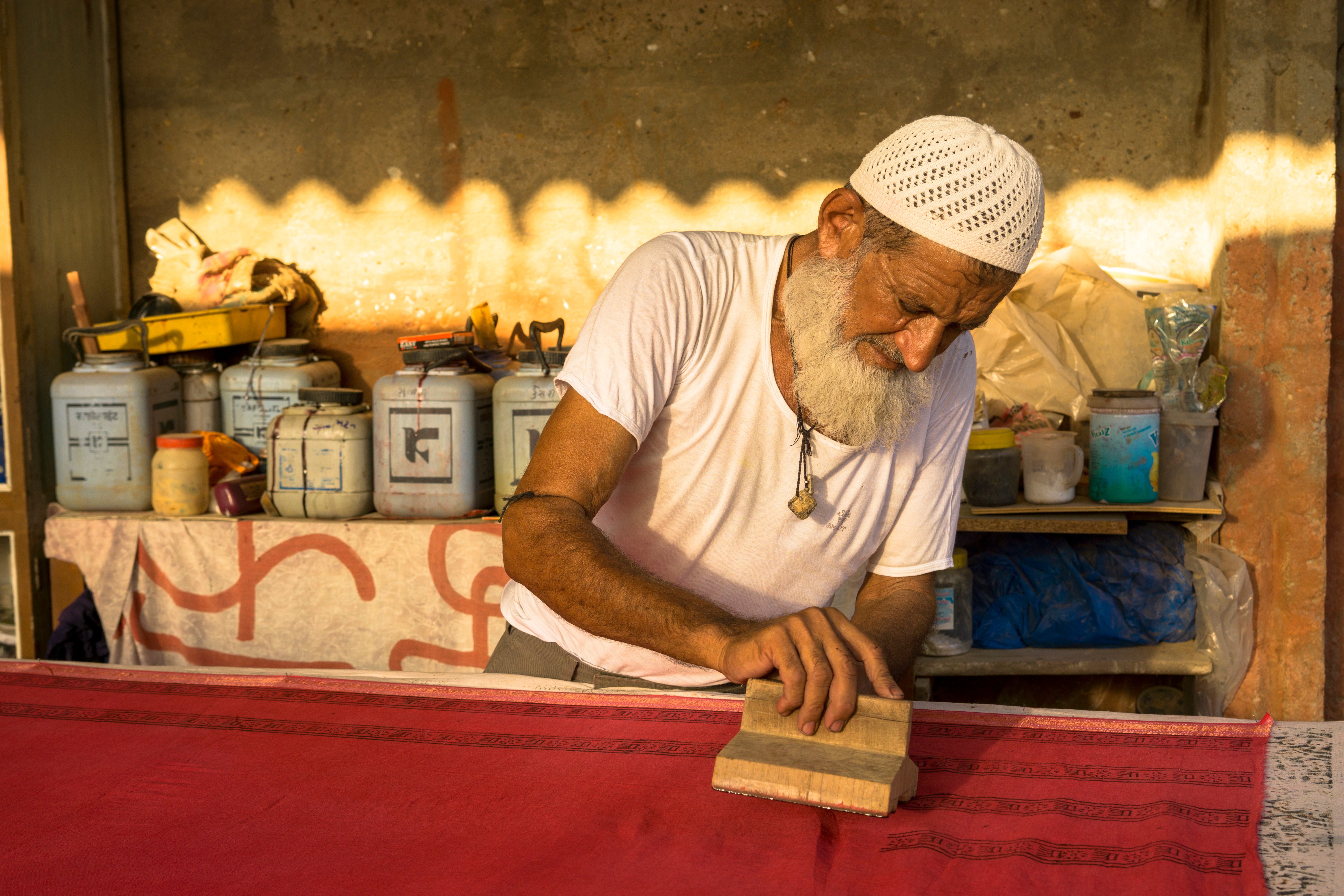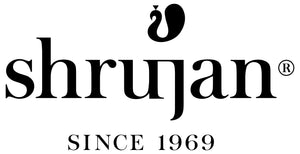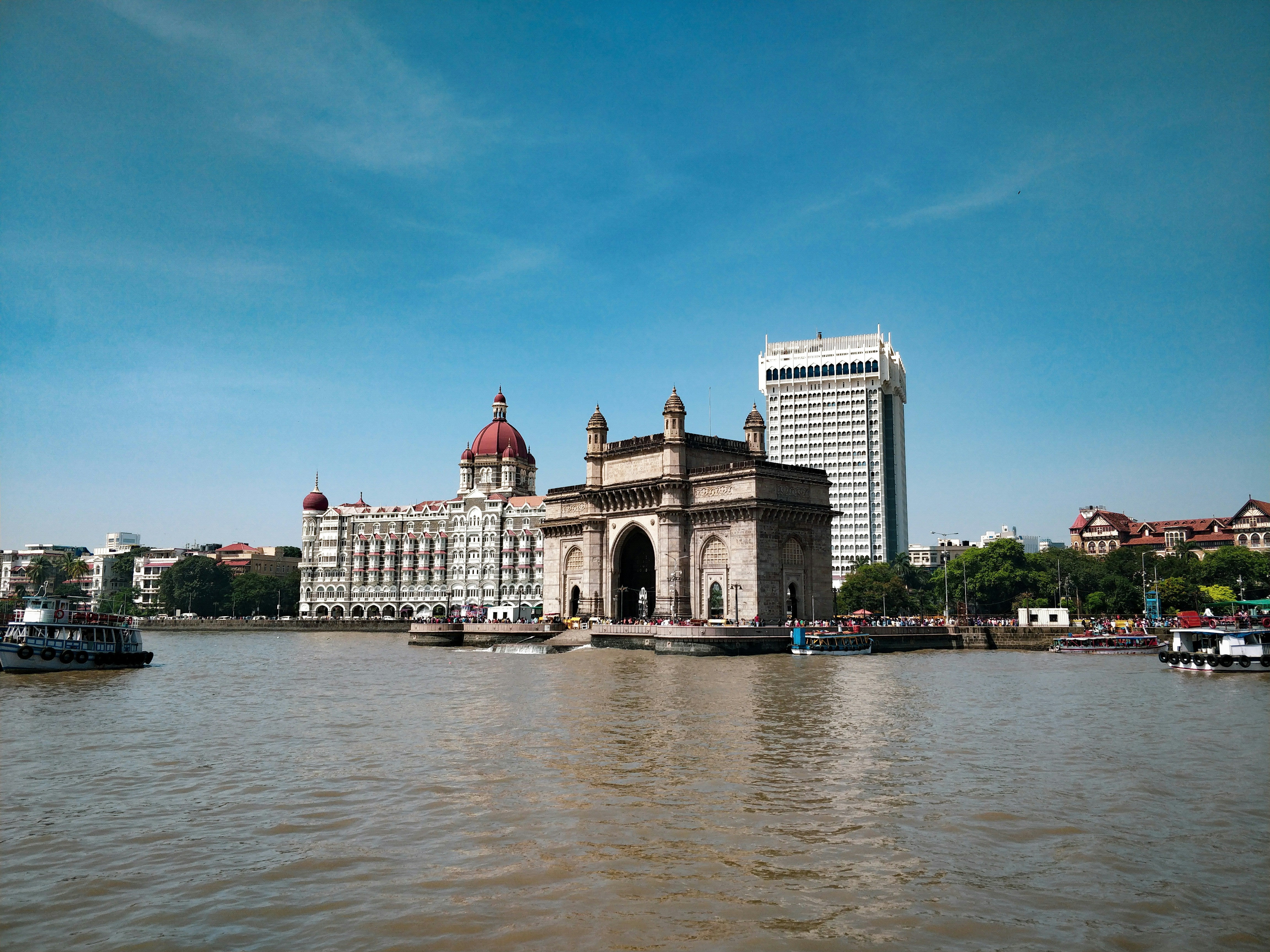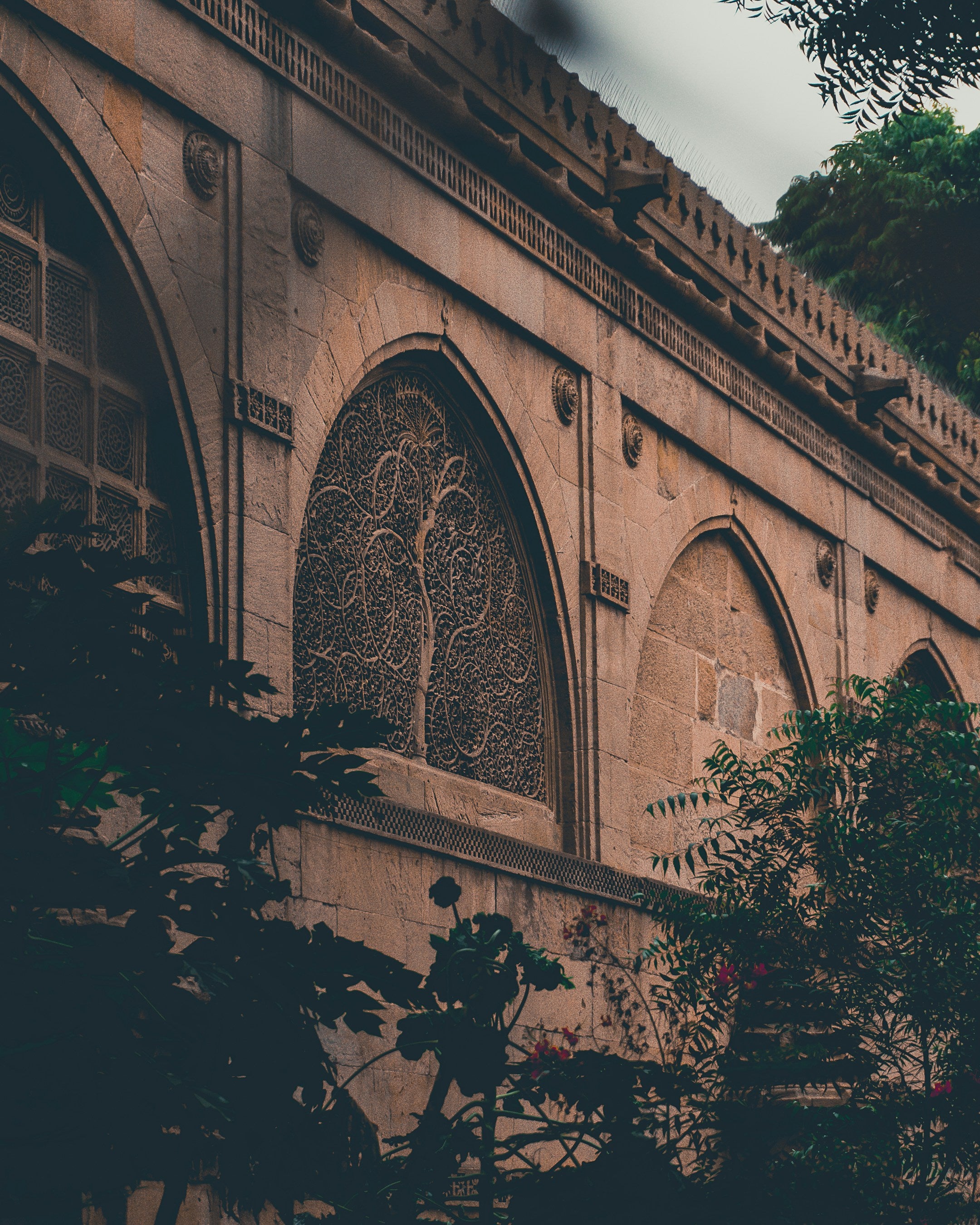
Hand block print
The traditional method of hand block printing involves dipping carved wooden blocks in dye and then stamping them on fabric to create designs. Often, two to three blocks are used within each other to create complex and intricate designs.
Many types of hand block printing are practised in Kutch. One of the most famous is Ajrakh. It is a resist block printing technique which uses natural dyes such as indigo and maddar.
Kutch is home to some of the most renowned masters of Ajrakh. These living treasures have taken this ancient craft to the world stage. Several international designers have earned fame and prestige by using of this craft in their haute couture collections.
Shrujan supports Ajrakh in various ways: it collaborates with this craft sector to expand the Ajrakh design language; promotes its craftspeople not only as skilled technicians but also as creative artists; and provides resources and opportunities to gifted young designers so that they can explore their love of Ajrakh to their hearts’ content.
Discharge printing is another hand block printing technique. Carved wooden blocks are dipped in a paste and stamped on pre-coloured fabric.
The paste is made from safolite, soda ash and maize gum; liquid vat dye is also added to it. The paste thus becomes a bleaching agent as well as a colourant.
As the paste dries on the fabric, the design is barely visible and this is just one of the reasons that make discharge printing a challenging process.
After the paste has completely dried, he fabric is carefully rolled up and steamed. The heat and moisture from the steam takes away or discharges the fabric colour and, at the same time, adds another colour onto the stamped design.
Many unpredictable factors such as atmospheric humidity impact this printing technique. The printer himself does not know what the design will actually look like, till the roll of fabric is finally opened up. This uncertainty, this luck by chance aspect, is the magic of discharge printing!
Kutch was well-known for this mysterious and magical craft despite it being a labour-intensive and tedious technique. From the 1980s however, the craft began to decline. Chanda Shroff reached out to the only discharge printing family in Tera village to lend her support and ensure that the craft stayed alive.
Shrujan’s support for discharge printing continues. Its Design Studio carries out
innovations in several aspects of the craft including creating discharge-printed fabrics that are fashioned into high quality products. The endeavor is to safeguard and revive this precious textile craft; and, increase customer patronage so that more and more craft families can return to the craft and earn a dignified livelihood from it.





